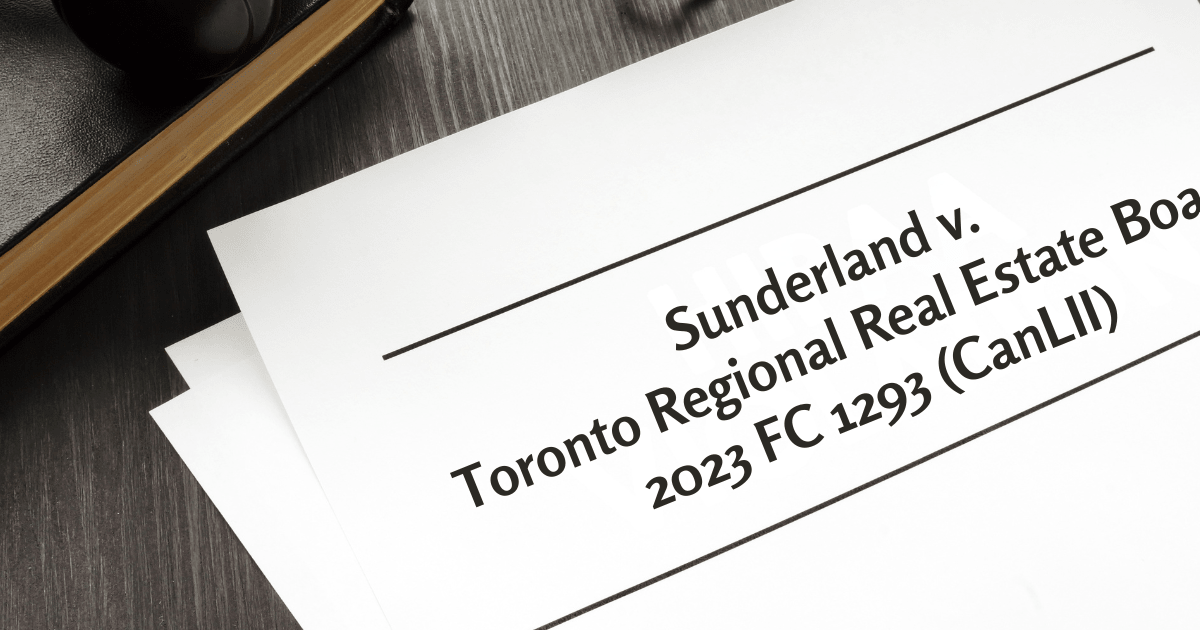In October, Toronto’s City Council voted to increase the city’s Vacant Home Tax (VHT) from one per cent to three per cent of a home’s value. This increase comes on the heels of the City’s approval of a graduated Municipal Land Transfer Tax (MLTT) in September 2023, which added thresholds for high-value residential properties containing at least one, and not more than two, single-family residences.
Both measures were introduced as a means of dealing with Toronto’s budget shortfall while helping to mitigate the housing crisis. While action is needed to improve both challenges, let’s not fool ourselves into thinking that these taxes will improve housing supply and affordability.
Let’s be clear: taxation efforts are a band-aid solution – band-aids with a few holes.
Impacts trickle down to all
The MLTT may appear to only impact high-value homeowners at first glance, but the impacts trickle down to homebuyers at all price points. When luxury property owners aren’t listing their homes for sale, deterred by the higher tax on their next purchase (assuming they’re moving up the property ladder), move-up buyers have nowhere to move up to – leaving first-time buyers stuck in their rentals.
This causes stagnation, bringing fewer listings on stream, but a market needs to circulate in order to remain healthy and vibrant. This is particularly problematic in a market that saw listings decline by 23.5 per cent in 2023, Re/Max reports. One might argue that listings have increased recently, but as we’ve seen in the past, it won’t be long before conditions heat up again and competition returns to the market.
Meanwhile, the cost of rent has increased 4.1 per cent year-over-year in Toronto, Rentals.ca reports. With fewer affordable rentals and fewer listings, renters will continue to face barriers when entering the market.
Now let’s look at the VHT. In theory, any efforts aimed at bringing more homes into circulation are a good thing, but the current VHT has some gaps, including short-term rental properties, vacant properties that are listed for sale, properties that are undergoing renovations and more.
Recognizing the problem
Toronto has just come out of one of the biggest real estate booms in North America, thanks to a growing population, an influx of market activity and steadily rising property values. Yet, despite the taxes being collected from homeowners, the City is still facing a shortfall, in budget and housing alike.
We need to learn from this. It’s clear that the “tax solution” isn’t solving anything. Rather than continuing to squeeze homeowners, let’s instead focus on ways to promote and diversify new housing supply, to ensure it remains affordable and accessible to its residents.
What should be considered instead?
Densification and diversity
We need more supply – supply that should be developed with densification at its core and integrate a diversity of housing (missing middle, subsidized, co-ops, etc.), and a diversity of people and income levels.
Access and affordability
Access and affordability are prerequisites when we think about supply to avoid the perils of gentrification. The City has an opportunity to implement a new housing strategy that doesn’t rely on taxing residents as a means of revenue and supporting programs that address the root problem.
Yes, Toronto needs market-driven housing, but our housing strategy also needs to integrate subsidized housing and co-op models to ensure people working in these communities can also live in these communities. It’s critical that we explore strategies that offer not just a good return on investment, but a high standard of living and liveability for all – diverse and densified urban neighbourhoods do that.
Cap on tax-hikes
The City might consider capping measures like the VHT and the MLTT. The VHT has increased by two per cent since the beginning of 2023, which means homeowners will continue to be squeezed if caps aren’t put in place. Moreover, when it comes to the MLTT, a cap could be based on the average price point for any residential property in Toronto in 2008 when the MLTT was first introduced, which was $379,080, to ensure the costs are predictable for would-be sellers and don’t fluctuate with the market.
With 73,000 realtors, Toronto makes up the greatest proportion of Canada’s 160,000+ professional realtors. There’s an opportunity here to lead change on a municipal level and set examples for provincial and federal governments.
Yes, we have a housing crisis in Toronto, but leveraging the already fragile housing market to solve Toronto’s financial situation is not the solution. While we wait on long-term housing solutions, I encourage Toronto realtors and those across Canada to educate themselves on the most recent taxation laws in their municipalities to best counsel their clients on how to succeed in an ever-changing market.

Christopher began his career as a Re/Max Sales Associate at an independently owned and operated brokerage in 2010 before joining sub-master franchise Re/Max Integra as a Franchise Sales Consultant in 2014. He then served as chief strategy officer and executive vice president of Re/Max Integra and was responsible for the day-to-day operations as well as developing and overseeing business strategies. He joined Re/Max, LLC as Senior Vice President of Re/Max Canada in July 2021 and was named president in November 2021. Christopher Alexander oversees operations for the company-owned Re/Max Canada region, which includes Alberta, British Columbia, Manitoba, New Brunswick, Newfoundland and Labrador, Nova Scotia, Ontario, Prince Edward Island and Saskatchewan. Additionally, he works closely with the leaders of the independent RE/MAX Quebec region to build a cohesive brand strategy across the country.
















trickle up won’t work any better than trickle down.
Your opinion is not fact-based.
I agree. Its hogwash
I don’t like it but I don’t see the problem, if this what “we” voted for. You may think minimum wage is $16ish an hour, after all the hidden taxes, you are back down to half that. But we have to keep the “free” programs going.
We need less government, less taxes in Toronto and across Canada. Governments are not held accountable to decrease deficits, they only increase taxes and keep spending to support their special interest friends…Canadians should start to elect governments that are fiscally responsible not money printing machines.
It looks like no one is listening to me but I will say it again. If you bring the landlord tenant legislation more to the center where you can actually evict a non paying or troublesome tenant in a reasonable amount of time you will have plenty of people renting apartments, their vacant houses, basements and whatever else that would be rent able. I myself have a vacant house and an apartment and know several others with the same and none of us are willing to take the risk in getting a bad tenant. Leaving it vacant and losing money each month until sold is fair better than the possible problems. It’s the elephant in the room than no one is willing to acknowledge
The Legislation is bias. Landlords don’t have equal footing. Leases should govern th terms of the Lease. I sympathize with the Real Market conditions that doesnt offer affordable housing, but how it that the problems of Landlords who invest and expect a return just like any other Industry. If the Landlord has to live with the liabilities of his Investment on Market conditions so should the tenant, if he cannot afford to find housing, it is not the problem created by the Landlord. There bigger issues at play but not brought on by the Landlords.
I agree 100 present
There are lots of vacant unit because of the bad tenant landlord act
73,000 realtors in Toronto. There lies the problem. So many desperate to make a quick easy buck screwing over buyers and sellers. The industry has lost face. Those who have their film crews follow their luxury life and boast on social media. Look at me sold in 2 hours over ask do you want to see me pose beside my new Mercedes or my boss suit sitting in first class. Really question where the need for realtors will be after class action lawsuits further expose the corrupt business it has become.